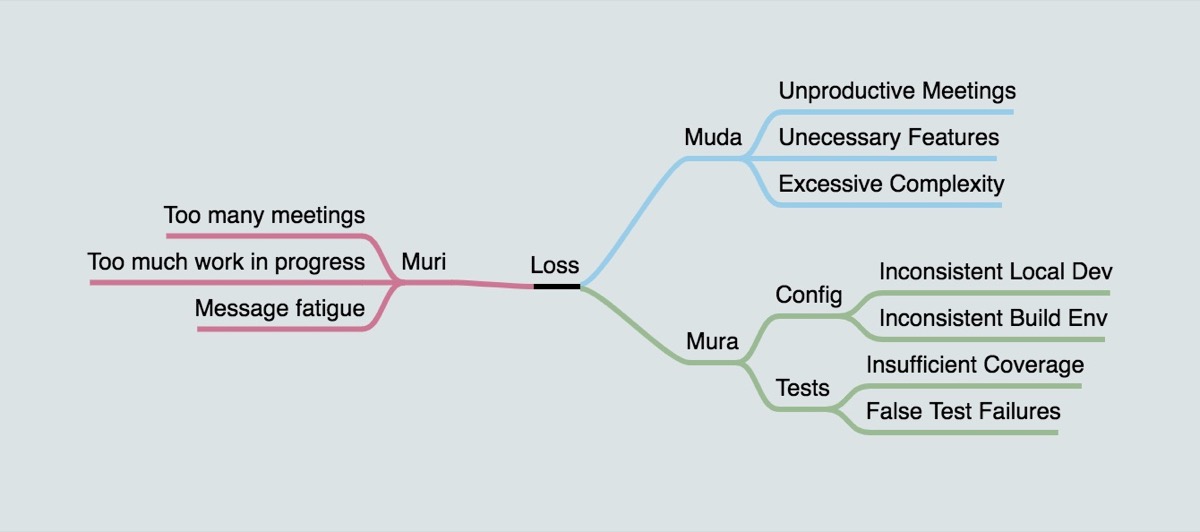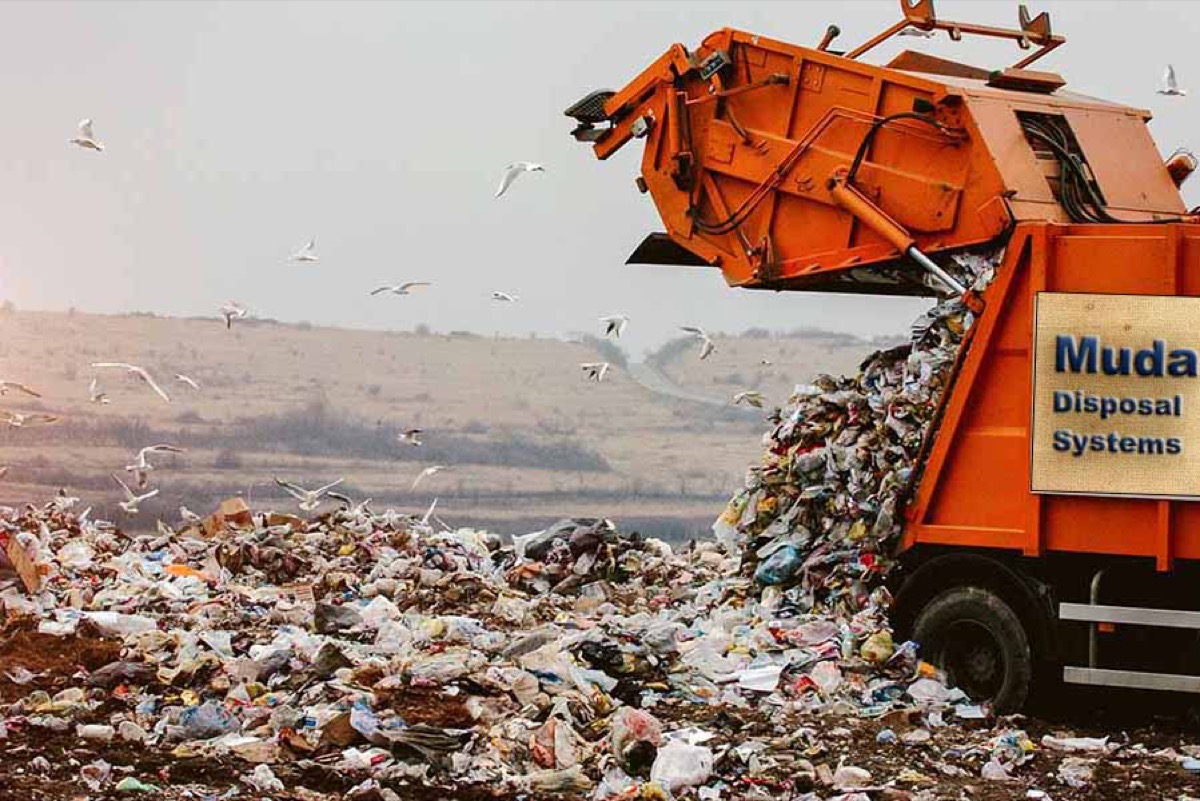A Taxonomy of Waste
naming things is half the battle
Lean gives us a vocabulary to refine our understanding different kinds of wasteful activity, effectively a taxonomy for waste, which we can use to classify our observations, to use as a basis for selecting practice improvements. A proper lexicon helps us to understand and communicate the nature of the value stream we’re trying to model.
A Taxonomy of Waste
SixSigma defines eight classifiers of waste:
- Transport – Moving people, products & information
- Inventory – Storing parts, pieces ahead of requirements
- Motion – Bending, turning, reaching, lifting
- Waiting – For parts, information, instructions, equipment

- Over production – Making more than is immediately required
- Over processing – Building to a higher specification than needed
- Defects – Rework, scrap, incorrect documentation
- Skills – Underutilization or delegation without training
Short as life is, we make it still shorter by the careless waste of time.
— Victor Hugo — Under Sentence of Death
Muda, Muri and Mura
For the software domain, most discussion is centered on three categories commonly expressed by the Anglicized Japanese words:
Muda: non-value adding activities
Muri: Overburdening activities
Mura: Unevenness or inconsistency

Simply by developing a better comprehension of these classifiers of wasteful activity, we learn something about how to improve our process, gaining a more precise idea of what it is that we’re trying to fix.
Developing a vocabulary allows us to better organize information for our own comprehension, and for improved communication with others. It makes it easier to search, find and use the information that we have. It provides context for discussion, resolving ambiguity. It provides an anchor for distillation of the problem space, for example by assigning attributes to classifiers to clarify meaning, or to provide subordinate classifiers for additional refinement.
Classifying the stars has helped materially in all studies of the structure of the universe.
— Annie Jump Cannon
Generally, teams simply tag tickets according to classifiers that come to mind, for example marking a ticket as blocked. If the choice had to be made about whether to choose Muda, Muri or Mura as why the ticket is blocked, it would generate some useful discussion.

Formalizing the vocabulary, for example on schema.org, would make it easier for teams to incorporate a standard vocabulary into their workflow. Software development tools could provide out-of-the-box attributes for standard classifiers of wasteful behaviors. With our electronic card-walls properly decorated with Muda, Muri, and Mura, it would be just that much harder to kick the can down the road.
The importance a culture places on a concept is embodied in the language, and the richness of Japanese vocabulary relating to economy, efficiency and waste are indicators of something deeper in the culture worth exploring. In the context of the software development process, all three classifiers indicate a deviation for the optimal allocation of resources.

Activities that invoke the feeling of futility or uselessness are good candidates for classifying as “Muda.” More tangibly, features built but not used fall in this bucket.
Loss of effectiveness from context switching can be classified as “Muri,” including the broad class of problem of assigning more work than can reasonably be done to a team or individual.

In manufacturing, the unevenness classifier “Mura” tends to be along the lines of the effect of gyrating demand on the production line; this has an application in the software development shop as well, for example when the team is idled while budget allocations are worked out, and then stressed to make up for lost time. But I tend to think of “Mura” more along the lines of missing pieces in build automation or even insufficient automated testing.
Waste is anything the team itself feels is not helpful in accomplishing the mission
— Mary Poppendieck
We’re not limited to these three terms taxonomy of waste: we’re free to expand on it whenever we find ourselves facing a problem that doesn’t fit neatly in the schema. The point isn’t to adhere to some standard usage, but to solve the problems we’re actually facing.
An enhanced vocabulary of wasteful activity not only helps us communicate more effectively, but it also aids in our understanding of the nature of the problems we’re grappling with, providing a means to explore the attributes associated with of different classes of wasteful activity independently and in greater depth that would otherwise be possible.
Markus Spiske — "Empty fuel containers"

Let's agree to define productivity in terms of throughput. We can debate the meaning of productivity in terms of additional measurements of the business value of delivered work, but as Eliyahu Goldratt pointed out in his critique of the Balanced Scorecard, there is a virtue in simplicity. Throughput doesn’t answer all our questions about business value, but it is a sufficient metric for the context of evaluating the relationship of practices with productivity.